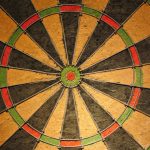
For luxury brands, creating customer relationships, and the revenues they bring, is everything. A $25,000 watch or $150,000 vehicle is rarely an impulse buy, but instead a purchase achieved after many different points of engagement.
An increasingly higher percentage of all ad budgets is being taken up by programmatic advertising, and luxury brands and their marketing efforts need to hop on board with this trend. Digital advertising has the power to use contextual targeting and select first-party data to find the right audiences, at the right times, and int the right places, no matter how high-echelon the product.
Programmatic is an indispensable marketing tool thanks to its ability to achieve a new level of behavioural targeting. While traditional media buys let brands reach general demographics aligning with their customer profile, programmatic is more granular. A luxury airline can not only target high-net-worth individuals over a certain threshold, but also use programmatic to reach high-income users who have recently researched travel destinations included in the airline’s travel destinations. A premium furniture retailer can target those shopping for homes above a certain price, finding a niche market of users with not only the budget, but possible need for their products.
Programmatic is also valuable for the highest of high-end brands, whose clientele is so niche that they generally eschew traditional advertising methods (like television or magazine placements) to focus their sales methods around personal relationships and word-of-mouth marketing.
Instead of five-figure watches or purses, think yachts and multi-million-dollar real estate transactions. Programmatic can give marketers income and wealth-related data on these high-net-worth individuals, presenting these upper-echelon brands and companies with new leads that possess the wealth necessary to actually purchase their product. These products have a very limited number of potential customers, but programmatic can inform, and hopefully entice, these previously unaware individuals about their niche offerings.
No matter where they are on the luxury scale, two important points of data that brands can use are the frequency and recency of their consumers’ behaviour. If a shopper consistently searching for gala dresses for months suddenly ceases their searches for a week, the programmatic algorithm can infer that they likely purchased a dress. Someone who house hunts daily is in all likelihood closer to the purchasing stage than someone browsing realty sites every other week, and would be honed in on accordingly. That is the power of machine learning, in action.
Context is also key, especially for these brands with target audiences much narrower when compared to popular brands like Coca-Cola or McDonald’s. For high-end items, quality supersedes quantity when it comes to impressions and clicks. For example: A luxury sports car company can incorporate today’s adtech advancements to ensure that when they target a segmented audience of ‘car enthusiasts,’ their ads will appear on modern sports car-related websites rather than websites for pickup truck fans or vintage vehicle junkies.
The end result of both contextual and behavioural targeting: the ability to scale audiences and produce higher top-of-funnel conversion rates. Programmatic focuses on ideal target audiences, rather than only certain websites or app placements. It constantly optimises, updating the user data it possesses in order to refine and target audiences in real-time. It’s a customer behaviour database that is being constantly updated.
Luxury brands emphasise exclusivity, quality and innovation. The expansion beyond static and uniform digital ad formats allows them to test and discover the formats that most allow them to differentiate themselves and convey their advantage in the marketplace. Certain ad formats might be more effective for certain industries, income brackets, or on certain apps and social media platforms.
Programmatic allows luxury retailers to find, refine, and capitalise off their sweet spots on the digital advertising frontier, and fuse their tried-and-true business strategies with today’s advertising technology.
Read more: Look to the cloud as the silver lining for CX and fast fashion's global growth
 Interested in hearing leading global brands discuss subjects like this in person?
Interested in hearing leading global brands discuss subjects like this in person?
Find out more about Digital Marketing World Forum (#DMWF) Europe, London, North America, and Singapore.






